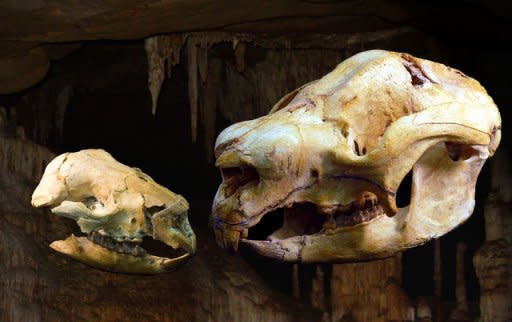Australia had tree-climbing sheep-sized marsupials
Sheep-sized relatives of modern-day wombats lived in Australian treetops 15 million years ago, a palaeontologist said Thursday as she was honoured for her discovery. Karen Black, from the University of New South Wales, said her team discovered the world's largest tree-climbing marsupial among fossils found at the Riversleigh World Heritage Site in Queensland state. The 70 kilogram (154 pound) diprotodontoids were most closely related to wombats, a furry ground-dwelling animal only found in Australia, said Black, who specialises in the diversity and evolution of the country's marsupials. Her research has focused on a 15 million-year-old cave that is littered with fossils and bones and contains well-preserved skulls and skeletons of the diprotodontoid marsupial called Nimbadon. "The Nimbadon fossil material is an incredibly rare and significant resource, not only because it is so exceptionally well-preserved, but because it represents individuals from a range of ages from tiny suckling pouch young to elderly adults," said Black. "The Nimbadon material has allowed the first detailed study of skull development in a fossil marsupial as well as brain development and behaviour." She said the creature would have been the largest animal climbing trees at the time. "(It) probably looked a bit like a long-legged wombat," she said. The existence of the cave came to light in 2010. Black said it appeared animals plunged to their deaths through a vertical entrance that was obscured by vegetation. The site is scientifically important because it documents a critical time in the evolution of Australia's flora and fauna when lush greenhouse conditions were giving way to a long, slow drying out. "The cave and its fossils are providing a rich legacy of clues about the environment 15 million years ago," she said. Black was recognised for her work Thursday when the Australian Academy of Science gave her the 2012 Dorothy Hill Award for female researchers in the earth sciences.



